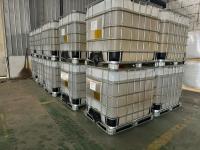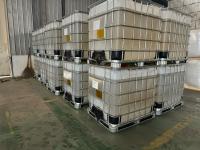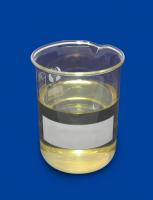Our Products
Product Center / SUDFLOC 475 equivalent model can be replaced by Chinafloc--POLYMAINE

Polyamine is a highly effective cationic organic polymer widely used in the fields of water treatment, mineral processing, pulp and paper production, textile wastewater management, and oilfield operations. As a type of coagulant and charge neutralizer, polyamine possesses multiple amino functional groups that carry strong positive charges, allowing it to effectively neutralize negatively charged colloidal particles and improve solid–liquid separation. The application of polyamine has become indispensable in both industrial and municipal treatment processes due to its versatility, stability, and environmental friendliness compared with inorganic coagulants such as alum or ferric salts.
In water treatment applications, polyamine is commonly used as a primary coagulant or as a coagulant aid with other flocculants like polyaluminum chloride (PAC) or polyacrylamide (PAM). It works by neutralizing the negative charges on suspended solids, colloids, and organic matter, which destabilizes these particles and allows them to aggregate into larger flocs that can be removed easily by sedimentation or filtration. Because polyamine forms fewer secondary pollutants compared with metal salts, it helps reduce sludge volume and improves dewatering efficiency. Typical applications include drinking water purification, industrial wastewater clarification, and municipal sewage treatment. In these processes, polyamine enhances turbidity removal, color reduction, and organic load control, ensuring compliance with discharge standards.
In drinking water treatment, polyamine is used as a coagulant to remove natural organic matter (NOM), humic acids, and colloidal impurities that contribute to color and turbidity. Compared to aluminum-based coagulants, polyamine offers better performance at a wider pH range and does not increase the residual metal concentration in treated water. It is particularly valuable in surface water treatment plants that handle high seasonal variations in water quality. Moreover, since polyamine is a low-toxicity organic polymer, it is compatible with potable water systems and often used in formulations that meet NSF/ANSI 60 certification standards.
In industrial wastewater treatment, polyamine is applied in effluents from textile dyeing, food processing, electroplating, oil refining, paper manufacturing, and chemical industries. Its cationic nature allows it to effectively remove color, heavy metals, suspended solids, and emulsified oils. For instance, in textile wastewater treatment, polyamine reacts with negatively charged dye molecules and colloidal pigments, leading to effective decolorization and clarification. In electroplating and metal-finishing wastewater, it helps precipitate heavy metals like chromium, nickel, and copper by complexation and charge neutralization. Furthermore, in oily wastewater such as that from refineries or petrochemical operations, polyamine helps break oil–water emulsions and facilitates oil recovery.
Polyamine is also widely used in mineral processing and beneficiation operations as a flocculant, coagulant, and slime remover. In the mining industry, particularly in the treatment of tailings and clarification of process water, polyamine enhances the sedimentation of fine particles like clays, silts, and iron oxides. It improves the recycling of process water, reduces the need for fresh water, and minimizes environmental discharge. In some cases, polyamine acts as a depressant or flotation modifier, adjusting the surface charge of minerals to optimize separation efficiency. For example, in iron ore beneficiation, polyamine can be used to flocculate fine hematite or quartz particles, improving the clarity of recycled process water and reducing reagent consumption in flotation circuits.
In the pulp and paper industry, polyamine serves as a retention and drainage aid, helping to improve the retention of fibers, fillers, and fines on the paper machine wire section. It also enhances paper formation, increases production speed, and improves the overall quality of the sheet. Additionally, polyamine is used in deinking processes during paper recycling, where it assists in the removal of ink particles, pitch, and stickies. Because polyamine can interact strongly with anionic trash (dissolved and colloidal substances), it is often used as part of the wet-end chemical program to stabilize the paper machine system and maintain consistent pH and zeta potential.
In oilfield and petroleum operations, polyamine functions as a demulsifier, water clarifier, and scale inhibitor aid. During crude oil dehydration, polyamine helps break oil–water emulsions and separate free water from crude oil. It is also used in produced water treatment units to reduce oil carryover, turbidity, and suspended solids before water is reinjected or discharged. Furthermore, in drilling muds and completion fluids, polyamine acts as a flocculant to improve solids removal and maintain rheological stability. Its high charge density and water solubility make it suitable for both freshwater and saline conditions commonly encountered in oilfield operations.
Polyamine is often used in combination with other polymers to enhance overall treatment efficiency. When combined with anionic or nonionic polyacrylamides, it forms a dual polymer system that provides both charge neutralization and bridging mechanisms. The polyamine first destabilizes the colloidal particles through charge neutralization, and then the high molecular weight polyacrylamide bridges the neutralized particles to form larger, more settleable flocs. This synergistic effect is widely used in wastewater treatment plants, particularly in sludge thickening and dewatering applications.
From an operational standpoint, polyamine offers several advantages over inorganic coagulants. It operates effectively over a broad pH range (typically 4–10), does not increase the conductivity or salinity of treated water, and produces less residual sludge. Moreover, the flocs formed by polyamine are stronger and more shear-resistant, resulting in better solid–liquid separation in clarifiers, dissolved air flotation (DAF) units, and filtration systems. Its high cationic charge density enables effective treatment even at relatively low dosages, reducing overall chemical consumption and lowering operating costs.
The formulation and properties of polyamine vary depending on the application. Most commercial polyamines are supplied as liquid products with 30–50% active content. Their viscosity and charge density can be adjusted by controlling the polymerization degree and monomer ratio. For example, low-viscosity polyamines are preferred for rapid mixing and charge neutralization, whereas higher-viscosity versions are more effective in floc formation and dewatering. In certain cases, polyamine is also blended with polyDADMAC or epichlorohydrin-dimethylamine (EPI-DMA) polymers to achieve tailored performance in specific water matrices.
In environmental and sustainability contexts, polyamine is gaining popularity due to its low secondary pollution potential and biodegradability. Unlike metal coagulants that generate large volumes of metal hydroxide sludge, polyamine produces less sludge that is easier to dewater and dispose of. Its use contributes to cleaner processes, lower disposal costs, and better compliance with stringent environmental regulations.
In conclusion, polyamine is a versatile cationic coagulant that plays a critical role in water and wastewater treatment, mineral processing, oilfield operations, and the paper industry. Its unique combination of high charge density, wide pH applicability, and low environmental impact makes it a preferred choice for modern treatment systems. Whether used alone or in combination with other polymers, polyamine continues to be one of the most important and effective agents for achieving efficient solid–liquid separation, pollution control, and process optimization across a wide range of industrial sectors.





